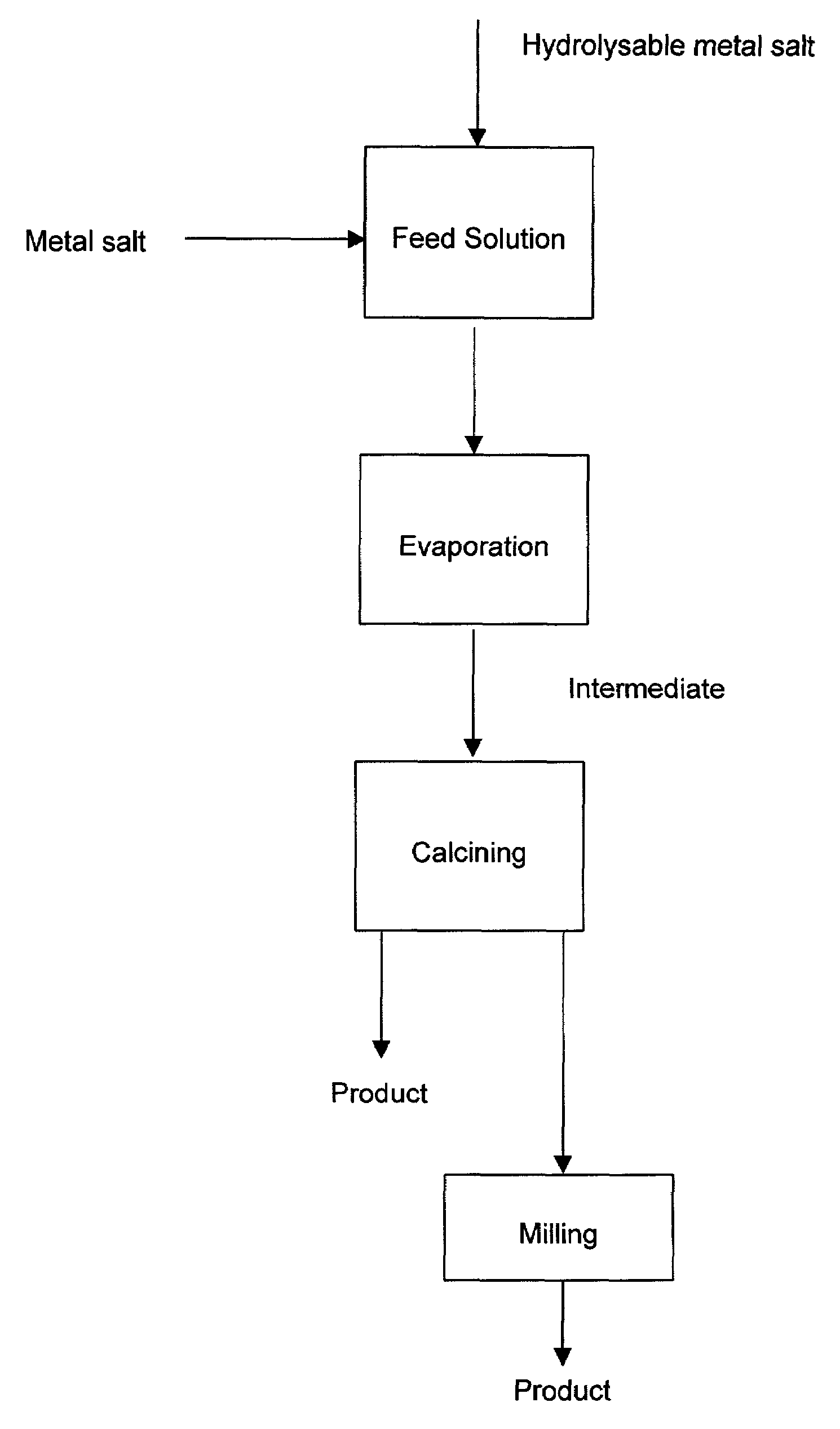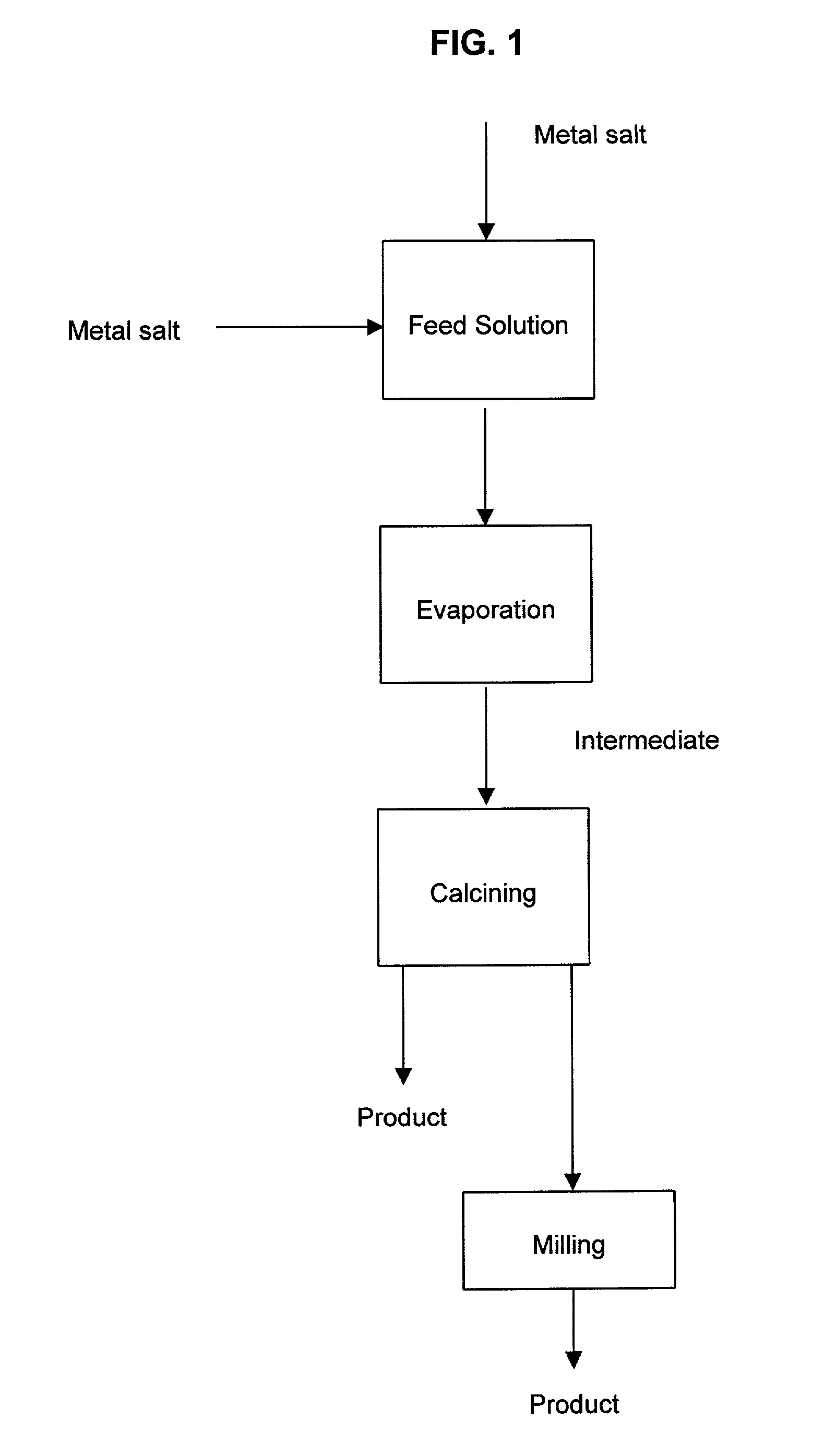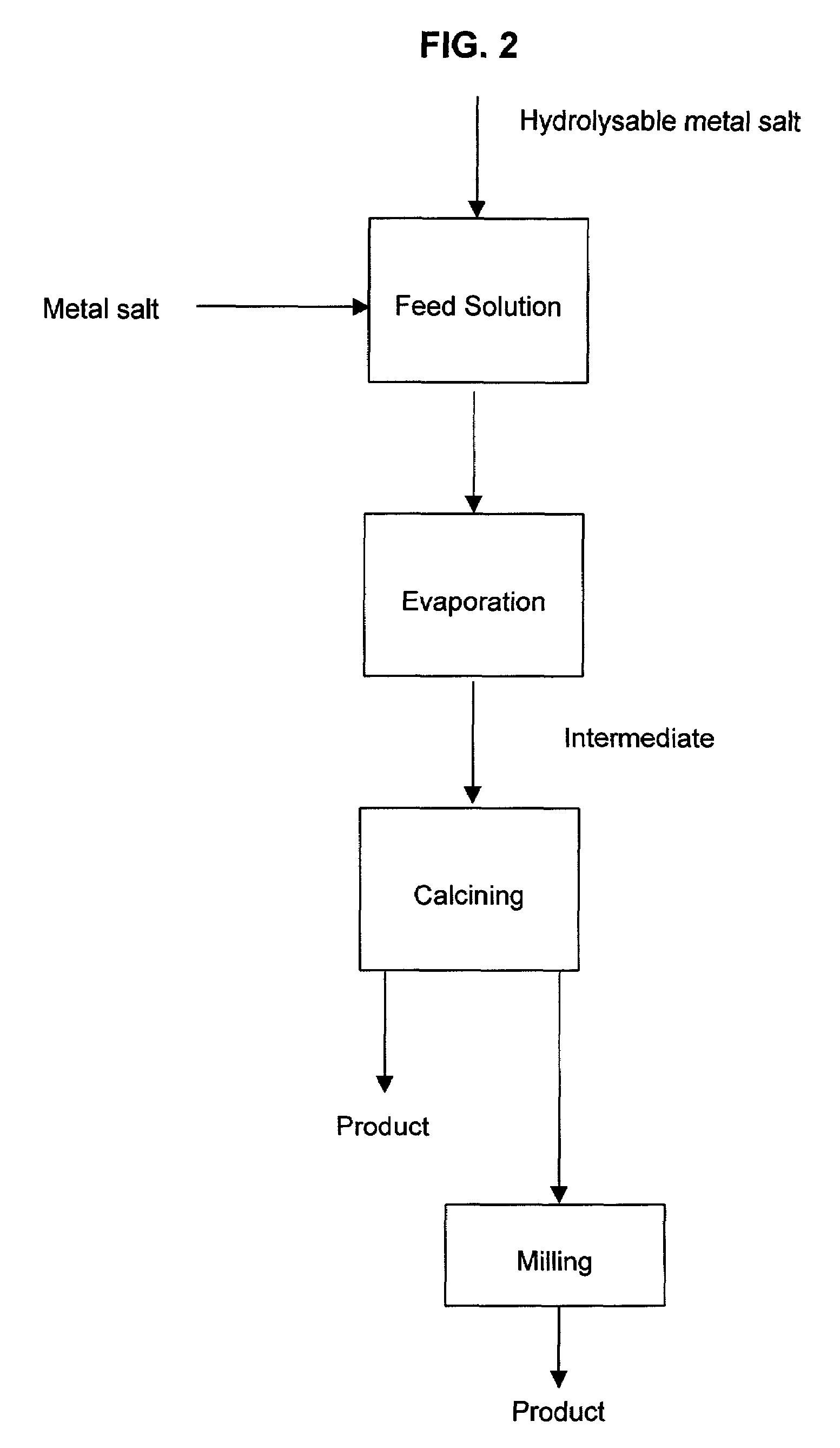Method for producing mixed metal oxides and metal oxide compounds
a technology of applied in metal/metal-oxides/metal-hydroxide catalysts, niobium compounds, aluminium oxides/hydroxides, etc., can solve the problem that the process can economically and commercially produce mixed metal oxides and metal oxide compounds
- Summary
- Abstract
- Description
- Claims
- Application Information
AI Technical Summary
Benefits of technology
Problems solved by technology
Method used
Image
Examples
example i
[0045]The feed solution may be an aqueous solution that includes a water-soluble copper salt and a water-soluble aluminum salt containing amounts of Cu and Al in the same ratio as the desired ratio of copper to aluminum in the product oxide. The feed solution may be processed according to the steps of the present invention to produce a copper aluminum oxide.
[0046]Stabilized Zirconia
[0047]Stabilized zirconia consists of zirconium oxide to which a stabilizing agent has been added to stabilize the cubic structure over a wide temperature range.
[0048]The feed solution may contain a zirconium salt and a stabilizing agent. The zirconium salt will preferably include a zirconium salt selected from the group consisting of zirconium sulfate, zirconium oxychloride, zirconium oxynitrate, zirconium carbonate or another water or acid soluble zirconium salt. The stabilizing agent will be selected from the group consisting of calcium oxide, magnesium oxide, yttrium oxide o...
example ii
[0053]An aqueous feed solution of copper sulfate (78 g / l Cu) and aluminum chloride (53 g / l Al) was prepared and evaporated. The evaporation was conducted by spraying the feed solution into a spray dryer at a temperature of 400° C., which is a temperature higher than the boiling point of the feed solution but lower than the temperature when significant crystal growth occurs. X-Ray diffraction analysis of the solid powder showed that the aluminum was present as the oxide, while the copper was present mostly as copper sulfate.
[0054]The resulting intermediate product was further calcined at 800° C. for 8 h. FIG. 3 is a scanning electron micrograph of the product after calcination at a magnification of 30,000×. It shows the two components are intimately mixed and that two separate phases cannot be distinguished at the scale of the micrograph. FIG. 4 is the X-Ray diffraction pattern of the calcined product and it shows that the crystals consist of CuO. Al2O3, with a minor amount of indepe...
example iii
[0055]Yttrium oxide (Y2O3) in an amount of 496 g was dissolved in 1.5 liter of concentrated HCl and diluted to 3 liter with water. Zirconium tetrachloride (ZrCl4) in an amount of 5358 g was slowly added to the cooled solution. After addition of ZrCl4, the yttrium chloride solution was mixed and the entire volume was diluted to 53 liters with water to form a feed solution.
[0056]The feed solution was evaporated by injecting it at a rate of 0.2 liters / min at the top of a titanium spray dryer with air injection at 500° C. and an outlet temperature of 250° C. The intermediate was recovered in a titanium cyclone. FIG. 5 is a scanning electron micrograph of the intermediate and FIG. 6 is the X-ray diffraction pattern of the intermediate and it shows that the intermediate is in the amorphous state.
[0057]The intermediate product formed from the evaporation was placed in a silica roasting dish and calcined in a muffle furnace at 600° C. for 8 h. FIG. 7 shows a scanning electron micrograph of ...
PUM
| Property | Measurement | Unit |
|---|---|---|
| temperature | aaaaa | aaaaa |
| temperature | aaaaa | aaaaa |
| temperature | aaaaa | aaaaa |
Abstract
Description
Claims
Application Information
 Login to View More
Login to View More - R&D
- Intellectual Property
- Life Sciences
- Materials
- Tech Scout
- Unparalleled Data Quality
- Higher Quality Content
- 60% Fewer Hallucinations
Browse by: Latest US Patents, China's latest patents, Technical Efficacy Thesaurus, Application Domain, Technology Topic, Popular Technical Reports.
© 2025 PatSnap. All rights reserved.Legal|Privacy policy|Modern Slavery Act Transparency Statement|Sitemap|About US| Contact US: help@patsnap.com



